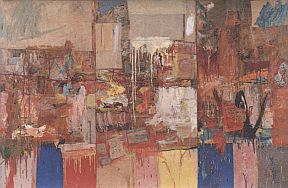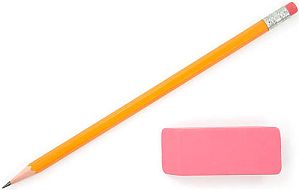|
I went into the retrospective as one kind of art viewer. I'm not an art expert by any means, although I am art savvy in many ways - which roughly translates to I know what I like. I wasn't expecting anything. At the same time I wasn't completely unfamiliar with the guy: I'd watched him closely and listened him speak when Werner interviewed him (the best interview I've ever seen Werner do) and I knew I loved him ie I knew I loved the person he was, or at least I loved the person I considered him to be, based on listening him conversing with Werner, and particularly on listening the way he conversed. But I'd never really known, bothered to find out about, or even cursorily looked at or into his art.
It's an intellectual assertion (which doesn't make it any less valid) to say that Rauschenberg's life and work is erasing the rules for what art is considered to be. Yet something happened for me not intellectually but rather experientially in viewing his retrospective ie something shifted for me in the constraints within which I experience art, after which I'll never see art (or the world, for that matter) in the same way again. Ever.

